Their lagoons languishing, precious Spanish wetlands go dry
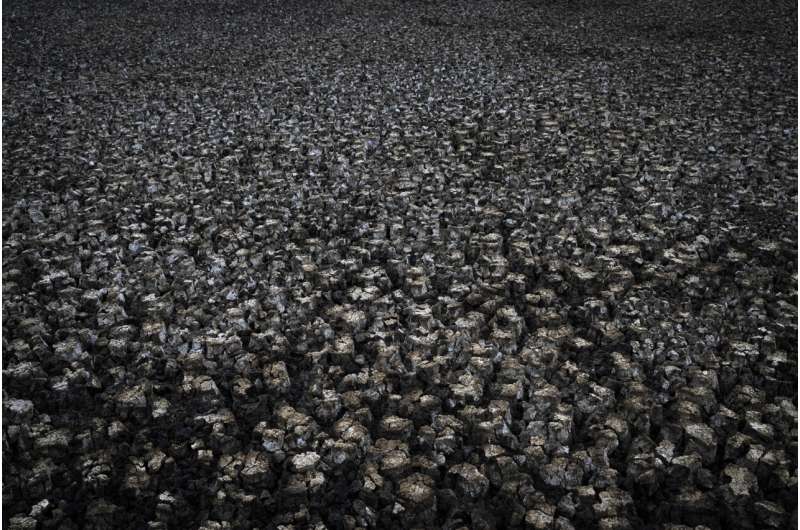
Flamingos, herons and fish once filled a freshwater lagoon in southern Spain. Today, it's a fetid brown splotch. The whisper of wind in the grass is a sad substitute for the cacophony of migratory birds.
Biologist Carmen Díaz steps onto cracked mud. The lagoon in the heart of Spain's Doñana nature reserve is a puddle. The park called "the crown jewel of Spain" may be dying.
Farming and tourism had already drained the aquifer feeding Doñana. Then climate change hit Spain with record-high temperatures and a prolonged drought this year. The disappearance of Doñana's Santa Olalla lagoon's in August makes Díaz, 66, fear that the ecosystem she has studied for four decades may have vanished for good.
"Seeing this last bit of water makes me think that the entire park is dry," Díaz said.
Doñana's Santa Olalla lagoon was the biggest of the handful of lagoons that maintained some water year-round, providing a summer reservoir of aquatic plants and animals.
Sitting on an estuary where the Guadalquivir River meets the Atlantic Ocean, Doñana covers 74,000 hectares (182,000 acres). The reserve was founded in the 1960s with help from environmental group WWF. A UNESCO World Heritage Site and Biosphere Reserve, Doñana is a wintering site for a half-million waterfowl and a stopover spot for millions more birds that migrate from Africa to northern Europe. Home to five threatened bird species, including the endangered Spanish imperial eagle, Doñana also hosts a breeding-and-rescue center for the endangered Iberian lynx.
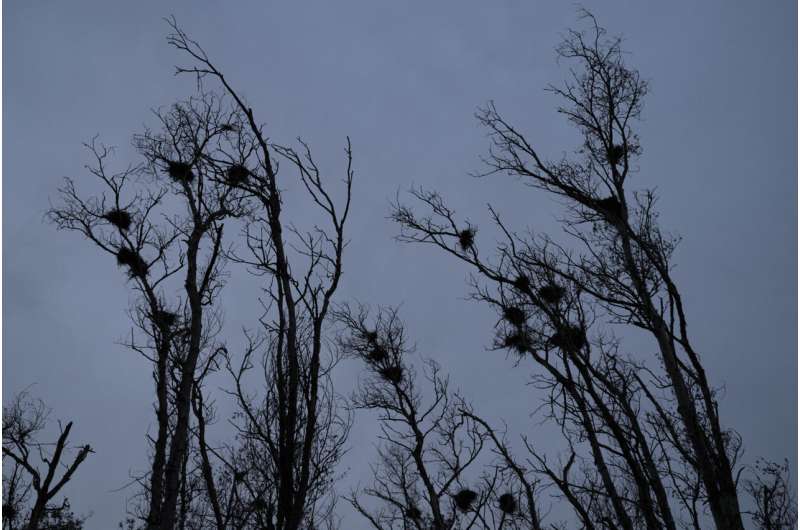
"The solution should have come at least 20 years ago but nothing was done. The environment always loses against the economy," said Díaz, a researcher for the Spanish National Research Council. "Doñana has been the crown jewel of Spain because it is an emblematic park, and we are letting it slip away."
Doñana encompasses two large ecosystems. Besides the wooded dunes, there are marshlands along the Guadalquivir.
Spanish galleons once brought silver back from Spain's American colonies here on their way upstream to Seville. Then, scientists and conservationists came from all over the world. Now Doñana is a case study in how humans destroy natural resources.
Eight mating pairs of imperial eagles have produced only two chicks in 2022, said Carlos Dávila, who works in Doñana for environmental group SEO Birdlife.
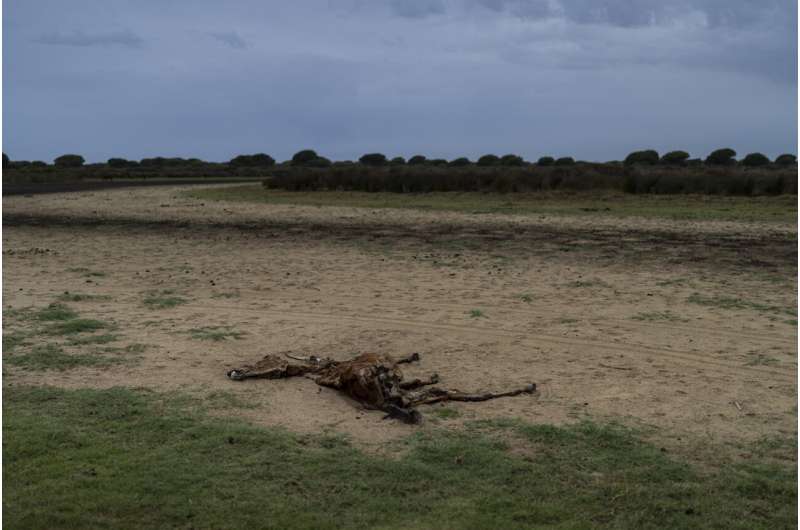
"It has been a disastrous year for the imperial eagle," he said.
When Doñana's aquifer fills from rain, lagoons emerge in the swallow depressions between the dunes, creating refuges for turtles, frogs, and aquatic plants. From atop a dune inside the reserve, the 360-degree view of low-lying trees and sand is only broken by a tightly packed mass of buildings seen when one turns to the Atlantic.
They are in Matalascañas, a former fishing village that developed into a beach resort town, complete with hotels, swimming pools and a now-defunct golf course. The water for Matalascañas comes from wells that pull from the aquifer. The European Court of Justice cited Matalascañas as making some of Doñana's once-permanent lagoons go dry. Spain's government has approved a plan to reroute water from another area to supply Matalascañas.
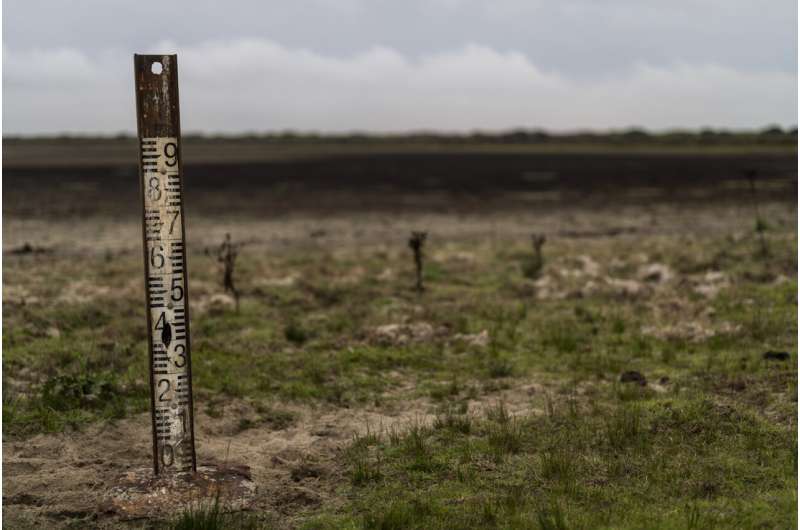
"The biggest problem is that this development draws from the aquifer using wells that are very close to the lagoons," Díaz said. "This forms a cone of depression that hurts the closest lagoons, which are the best ones, since they are the biggest."
A two-hour drive south of Seville, one enters Huelva, a rural province including the Doñana reserve. Like other areas near Spain's coast, Huelva has worked hard to become one of Europe's major agricultural areas. Strawberries, raspberries, blueberries and blackberries replaced olives, cereals and potatoes in the 1980s. European customers pay far more for the berries, but the crop needs much more water than olives do.
In 2004, authorities divided the farmland into areas eligible for irrigation and those that could only grow crops with rainwater. But with the berry trade booming, some farmers whose lands were left out of irrigation areas drilled wells anyway. WWF says there are between 1,000 and 2,000 illegal wells used to irrigate some 2,000 hectares (4,900 acres) of berries outside the reserve.
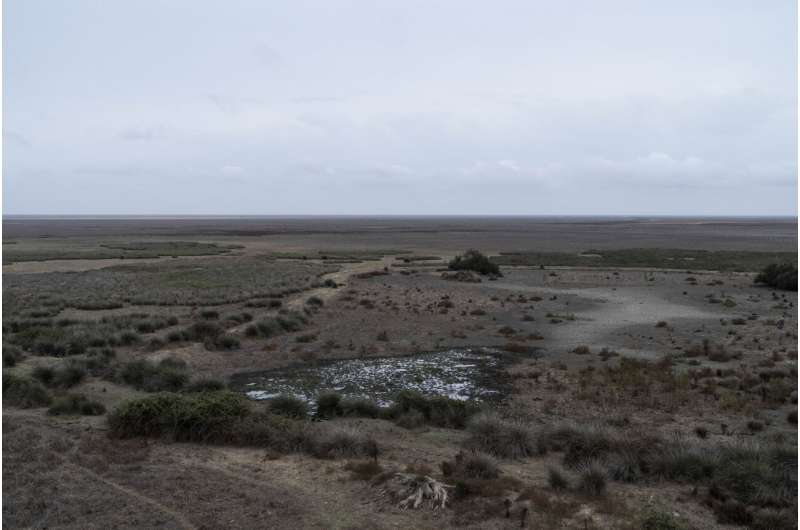
Outside the reserve's limits, roadside signs warn drivers to be on the lookout for lynx. Greenhouses hold mostly berries.
"Perhaps 50% of (damage done to the park) is due to drought and lack of rain, but the other 50% of the blame goes to the lack of governance in the area, the cutting off of tributaries, and illegal wells," WWF's Felipe Fuentelsaz told the AP.
Authorities have managed to close over 400 wells and purchased some farmland to remove crops, but far from being discouraged, many farmers are pushing authorities to reclassify their terrain as irrigable.
One group represents 1,500 farmers who feel that they were unfairly left out of the 2004 irrigation plans. Spokesman Julio Díaz said many families have the right to water and should be able to use it.
"What we are going to do is ensure that these farmers recover their historic rights, which they used to have," Díaz said. "Nothing will be increased, but we must recover what they once had."
-
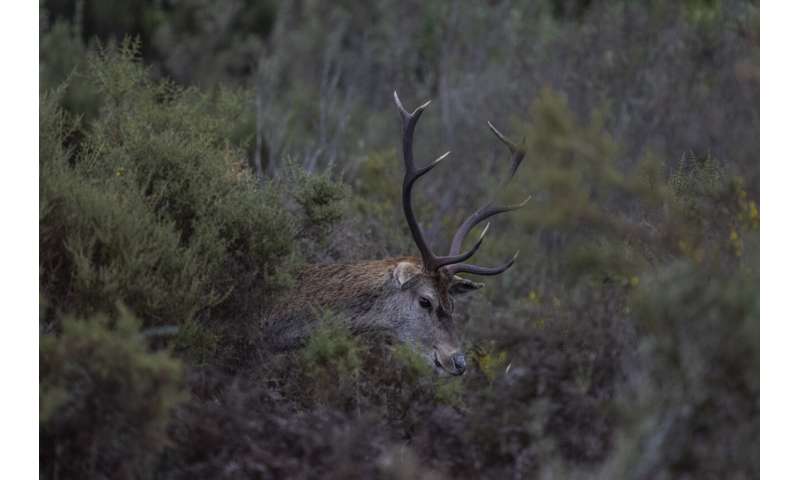
A deer grazes in Doñana natural park, southwest Spain, Wednesday, Oct. 19, 2022. Credit: AP Photo/Bernat Armangue -
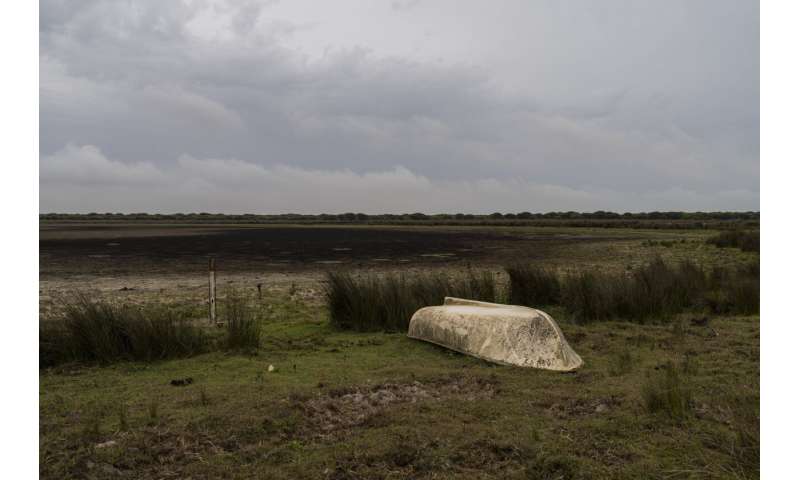
A boat sits in dry wetland in Doñana natural park, southwest Spain, Wednesday, Oct. 19, 2022. Farming and tourism had already drained the aquifer feeding Doñana. Then climate change hit Spain with record-high temperatures and a prolonged drought this year. Credit: AP Photo/Bernat Armangue -
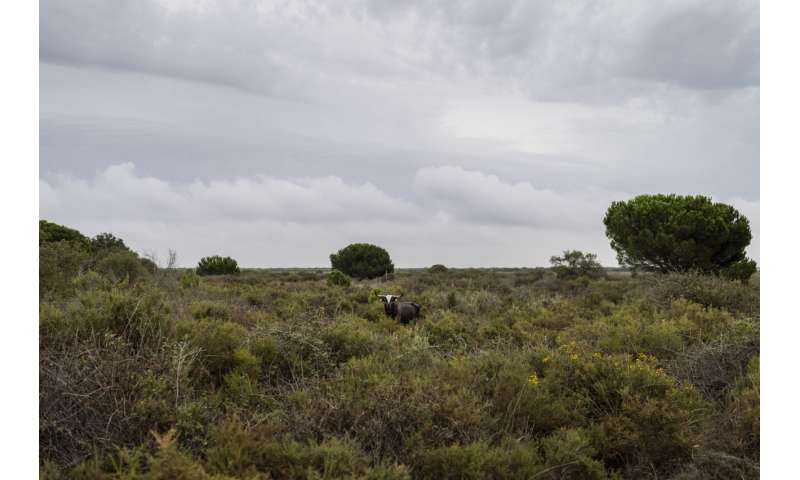
A bull grazes in Doñana natural park, southwest Spain, Wednesday, Oct. 19, 2022. Farming and tourism had already drained the aquifer feeding Doñana. Then climate change hit Spain with record-high temperatures and a prolonged drought this year. Credit: AP Photo/Bernat Armangue -
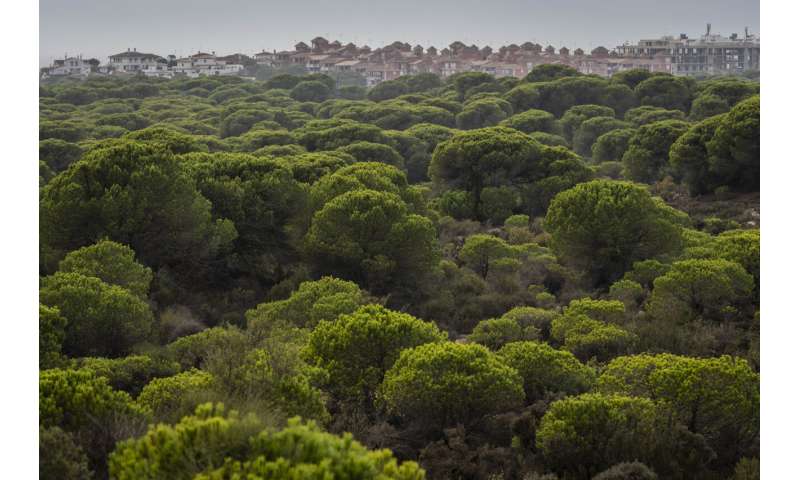
The Matalascanas town is seen in the horizon surrounded by the Doñana national park, southwest Spain, Wednesday, Oct. 19, 2022. Climate change hit Spain with record-high temperatures and a prolonged drought this year. Credit: AP Photo/Bernat Armangue -
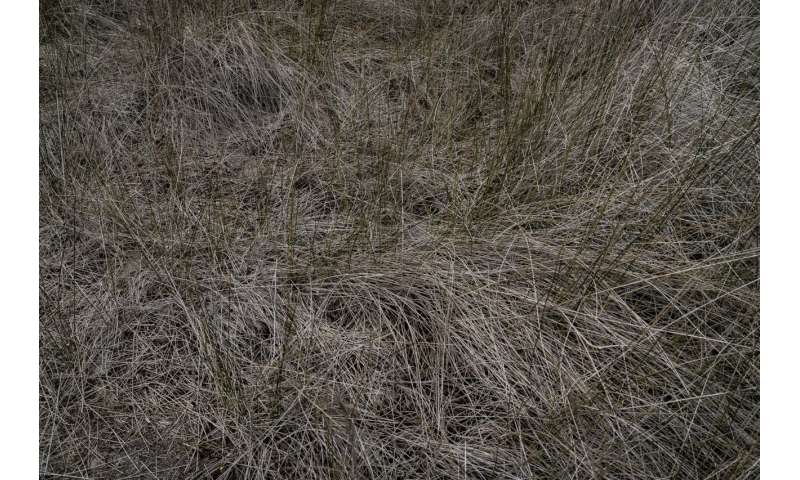
Vegetation sits in a dry wetland in Doñana natural park, southwest Spain, Wednesday, Oct. 19, 2022. Farming and tourism had already drained the aquifer feeding Doñana. Then climate change hit Spain with record-high temperatures and a prolonged drought this year. Credit: AP Photo/Bernat Armangue -
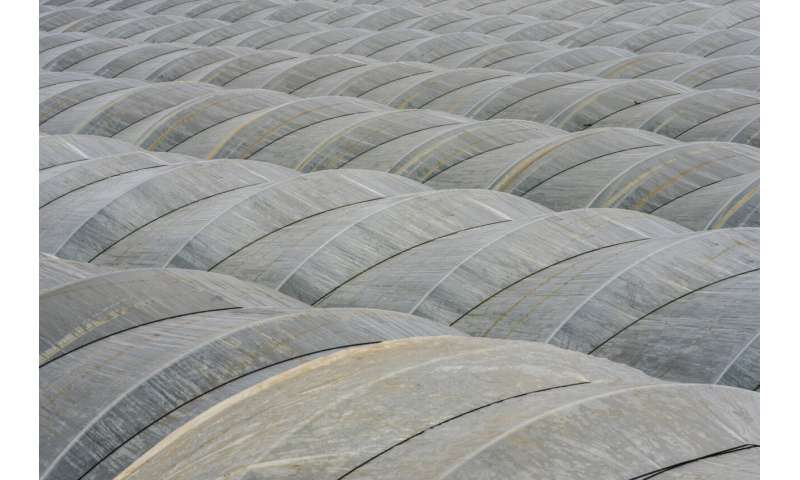
Plastic sheets cover a blueberry plantation near Lucena del Puerto, southwest Spain, Wednesday, Oct. 19, 2022. Farming and tourism had already drained the aquifer feeding Doñana. Then climate change hit Spain with record-high temperatures and a prolonged drought this year. Credit: AP Photo/Bernat Armangue -
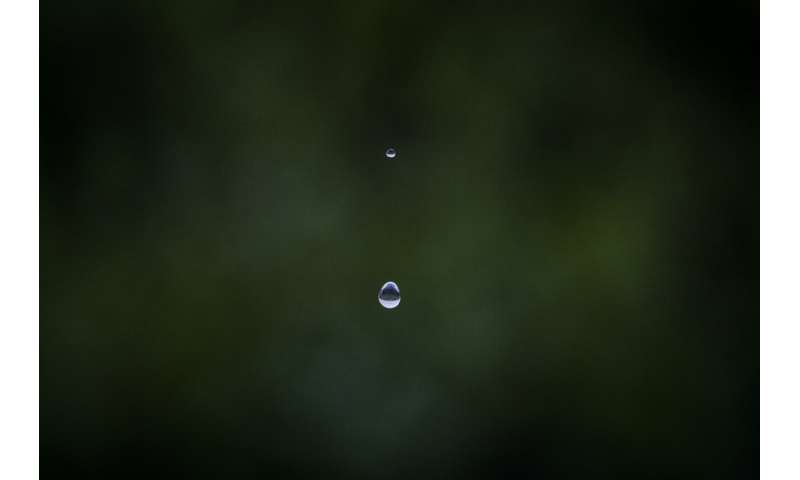
Drops of rain water fall down at a blueberry plantation near Lucena del Puerto, southwest Spain, Wednesday, Oct. 19, 2022. Farming and tourism had already drained the aquifer feeding Doñana. Then climate change hit Spain with record-high temperatures and a prolonged drought this year. Credit: AP Photo/Bernat Armangue -
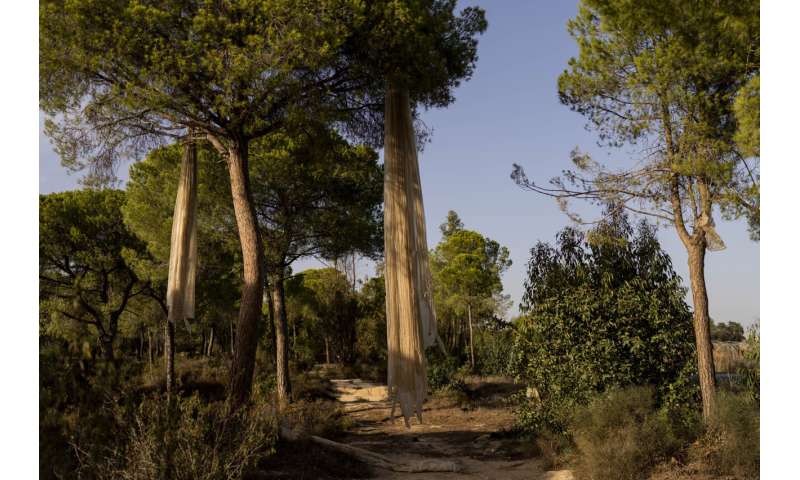
The remains of plastic sheets used on nearby plantations hang from trees near Lucena del Puerto, southwest Spain, Tuesday, Oct. 18 2022. Climate change hit Spain with record-high temperatures and a prolonged drought this year. Credit: AP Photo/Bernat Armangue -
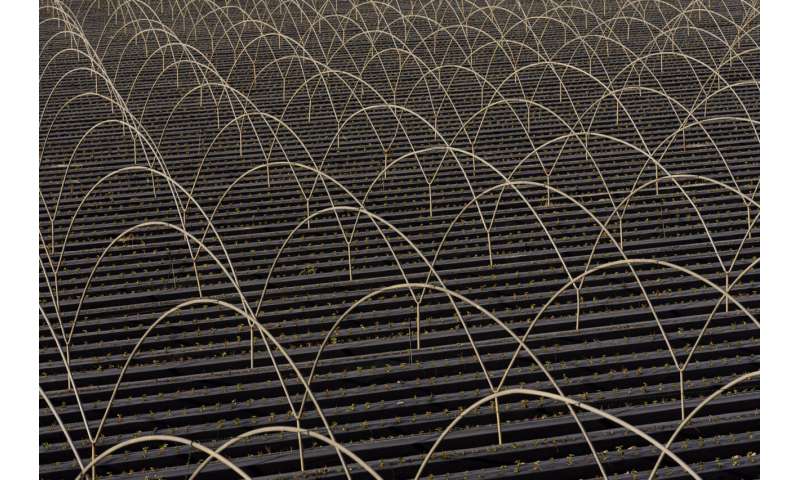
Strawberries grow at a plantation near Lucena del Puerto, southwest Spain, Tuesday, Oct. 18 2022. Farming and tourism had already drained the aquifer feeding Doñana. Then climate change hit Spain with record-high temperatures and a prolonged drought this year. Credit: AP Photo/Bernat Armangue -
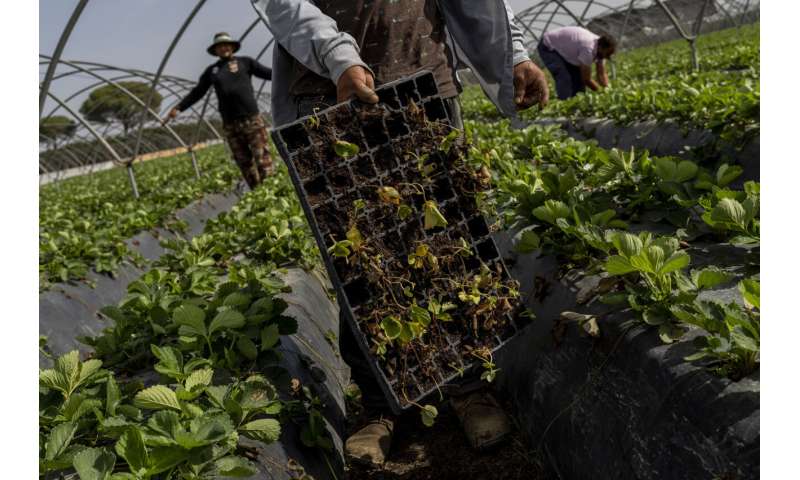
Temporary workers plant strawberries in farm in Almonte, southwest Spain, Tuesday, Oct. 18 2022. Farming and tourism had already drained the aquifer feeding Doñana. Then climate change hit Spain with record-high temperatures and a prolonged drought this year. Credit: AP Photo/Bernat Armangue -
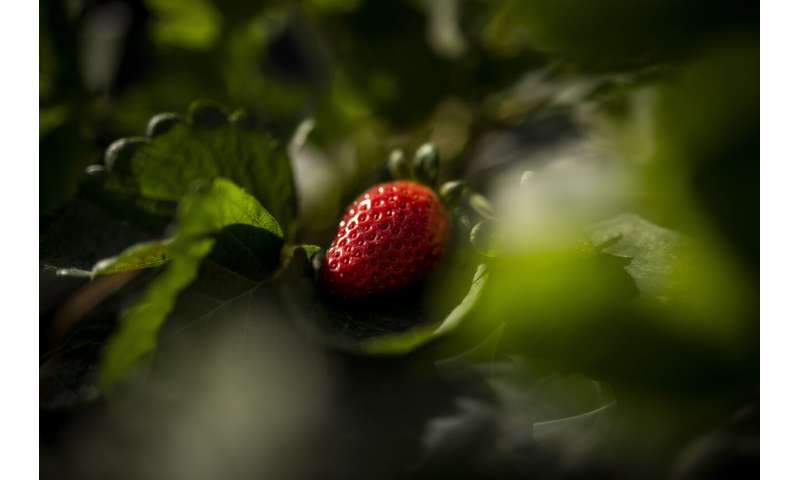
A strawberry grows in farm in Almonte, southwest Spain, Tuesday, Oct. 18 2022. Farming and tourism had already drained the aquifer feeding Doñana. Then climate change hit Spain with record-high temperatures and a prolonged drought this year. Credit: AP Photo/Bernat Armangue -
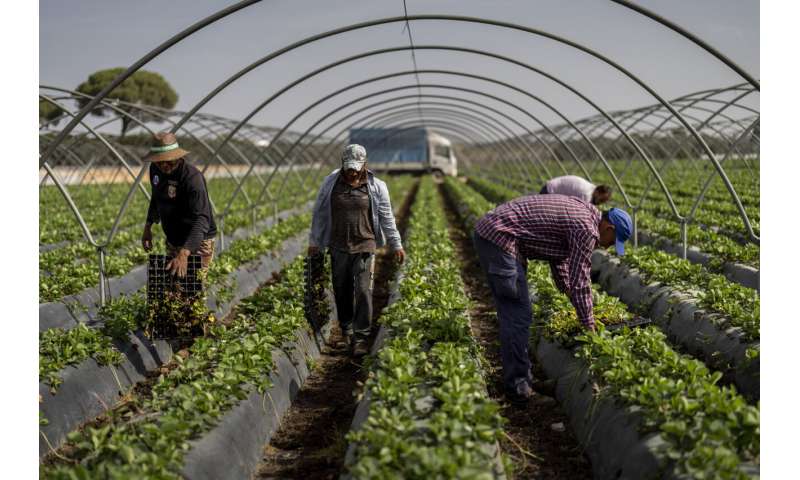
Temporary workers plant strawberries in farm in Almonte, southwest Spain, Tuesday, Oct. 18 2022. Farming and tourism had already drained the aquifer feeding Doñana. Then climate change hit Spain with record-high temperatures and a prolonged drought this year. Credit: AP Photo/Bernat Armangue -
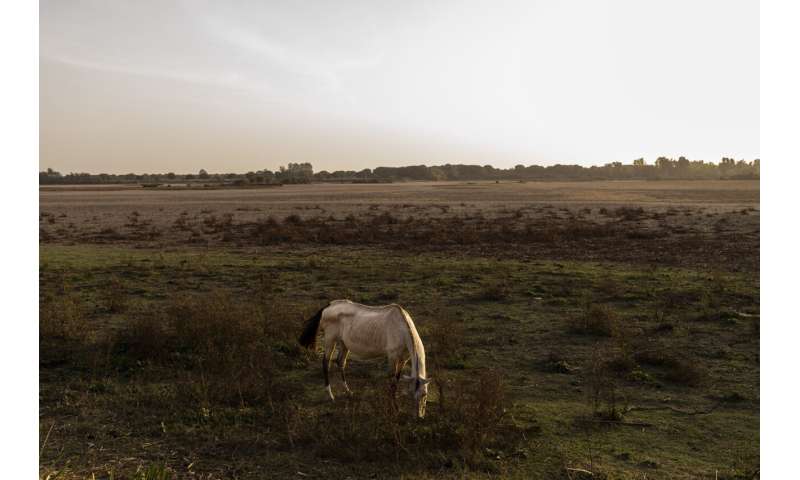
A horse grazes in the village of El Rocío in Almonte, southwest Spain, Tuesday, Oct. 18 2022. Climate change hit Spain with record-high temperatures and a prolonged drought this year. Credit: AP Photo/Bernat Armangue -
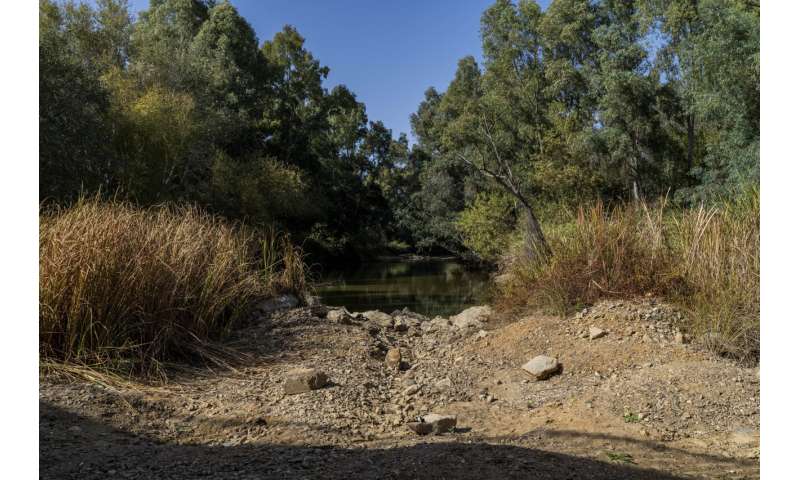
The Guadiamar river bank in Las Doblas, southwest Spain, Tuesday, Oct. 18 2022. Climate change hit Spain with record-high temperatures and a prolonged drought this year. Credit: AP Photo/Bernat Armangue -

A man places a candle in the sanctuary of the virgin of the Rocío in the village of El Rocío in Almonte, southwest Spain, Tuesday, Oct. 18 2022. Credit: AP Photo/Bernat Armangue -
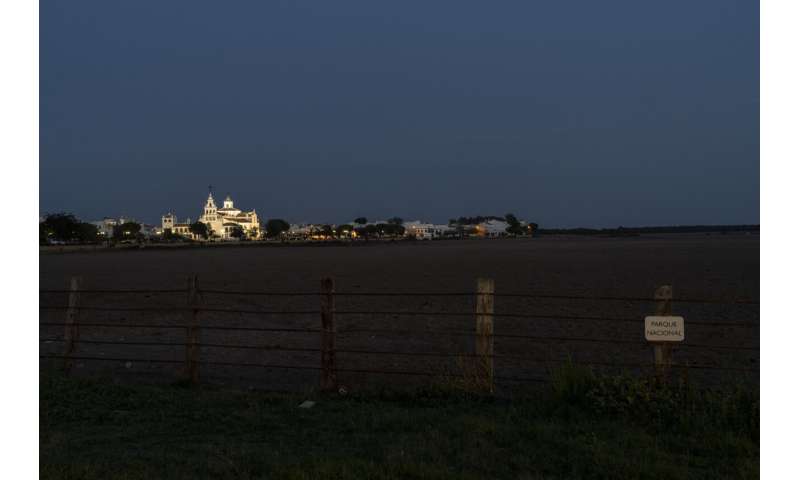
The village of El Rocío is seen in Almonte, southwest Spain, Tuesday, Oct. 18 2022. Credit: AP Photo/Bernat Armangue
Spain's central government is concerned that expanding water use could earn a hefty fine from the Europoean Union.
The government plans to reroute water from rivers that lie further west toward Doñana to relieve pressure on the aquifer. The group represented by Julio Díaz wants that water to come to them. But other farmers who have been using legal wells on lands declared irrigable say not so fast.
Manuel Delgado, spokesman for 300 farmers in the town of Almonte, said that his group believes that any new water should go to those farmers who already have water rights, so they can close their legal wells and protect the aquifer.
"If there is new terrain declared eligible for irrigation, we won't be able to replace the legal wells with the surface water," he said. "There won't be water for everyone."
© 2022 The Associated Press. All rights reserved. This material may not be published, broadcast, rewritten or redistributed without permission.




















